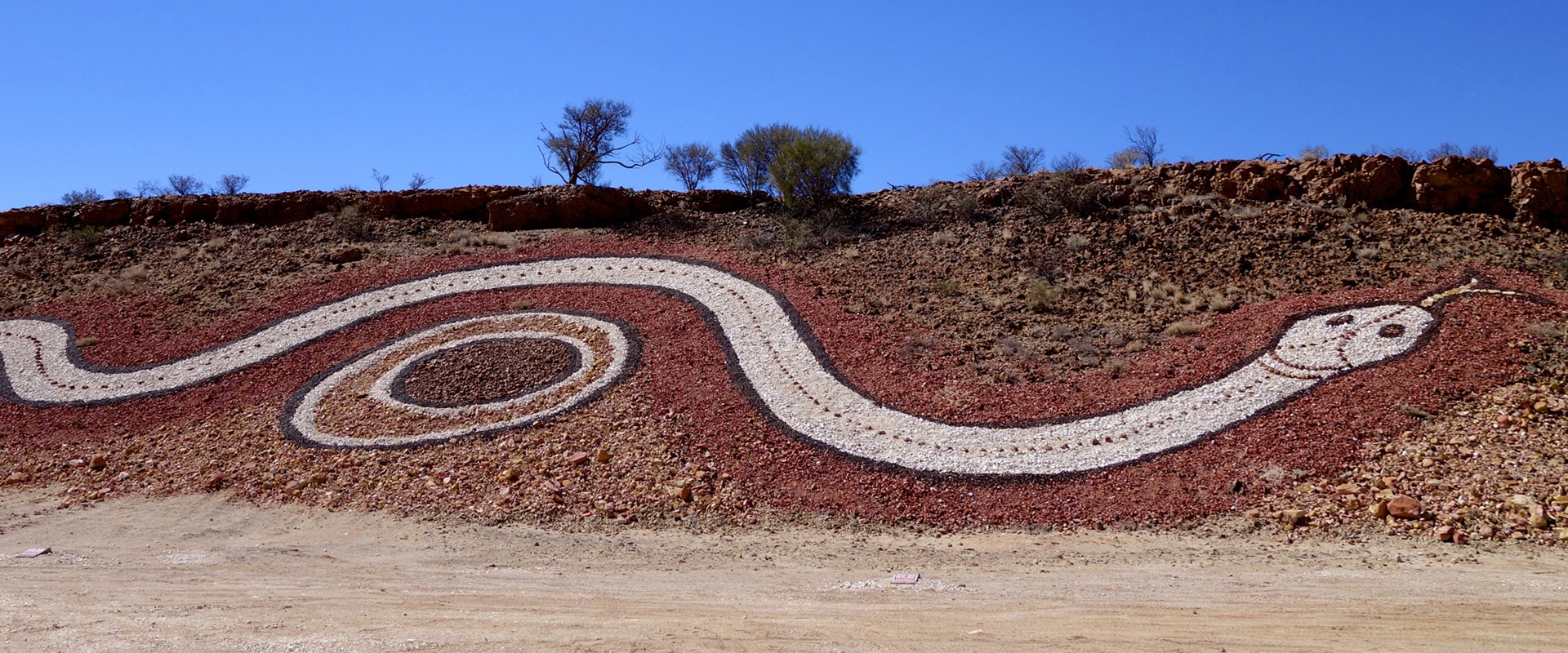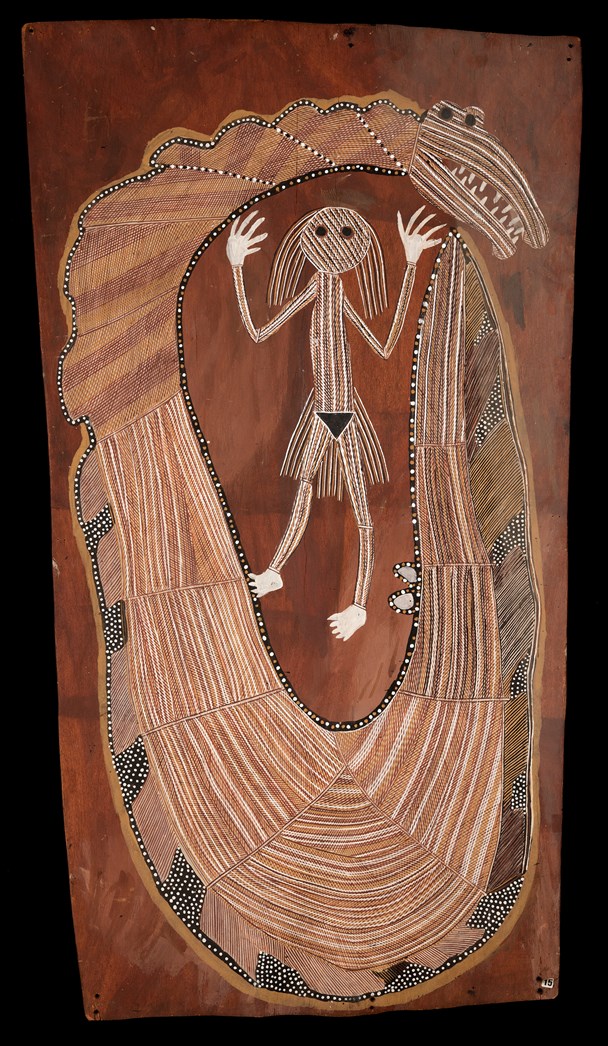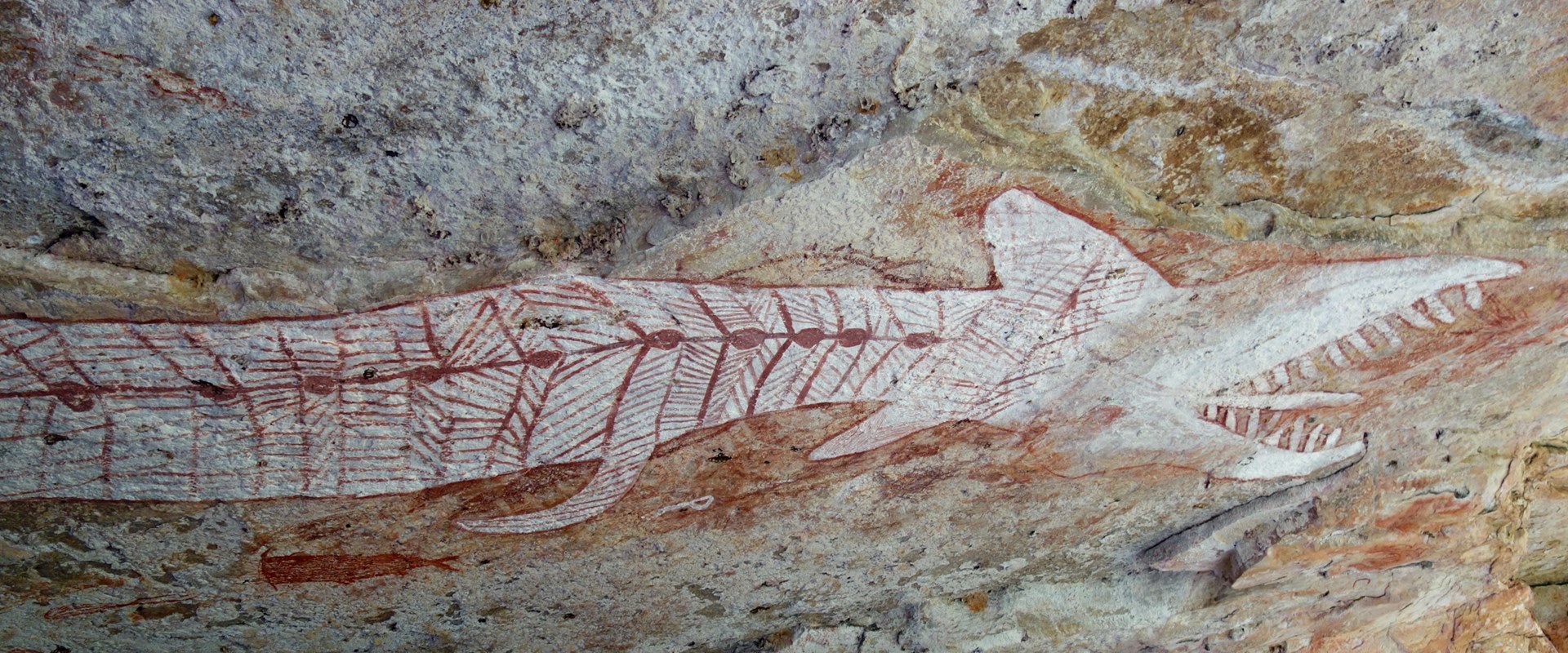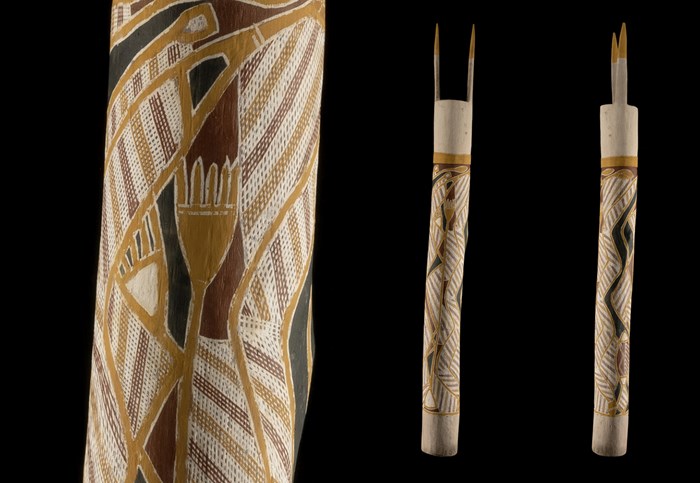Key in a search term below to search our website.
Key in a search term below to search our website.

The Rainbow Serpent is found in the mythology, religion and ceremonies of many Aboriginal people in Australia. There are many names for the Rainbow Serpent and ideas about it vary.
Peter Marralwanga depicted the Rainbow Serpent together with a mimi spirit - these spirits are thought to have taught humans the art of painting.

Mimi and Rainbow Serpent, by Peter Marralwanga, c1980.
Date
C.1980
Made by
Peter Marralwanga
Made in
Maningrida, Arnhem Land, Northern Territory, Australia
Museum reference
On display
Inspired By Nature gallery, World Cultures, Level 5 at the National Museum Of Scotland
A powerful immortal and creative being, the Rainbow Serpent is associated with rain and water, fertility and food, and with the prosperity of a community.
The earliest representations of Rainbow Serpents are found in rock art and related religious beliefs are at least 6000 years old.
The largest known image is a cave painting in Western Arnhem Land. It shows a mighty creature, more than 6 metres long, with a large dragon-like head and fearsome teeth.

Cave painting at Rainbow Serpent Shelter, Mount Borradaile in Western Arnhem Land, Northern Australia. © DU Photography © Alamy Stock Photo
In Central Australia and the Western Desert, Rainbow Serpents are believed to live underneath waterholes and to travel between them. During their ancestral journeys, they created sacred sites and many features in the landscapes. The snakes bring regenerating rain, but if not shown due respect, they may cause droughts or devastating floods.
In Western Arnhem Land, the Kunwinjuku people use the term ‘rainbow’ to describe Yingarna, the mythical mother of creation and her children. Yingarna gave birth to numerous ancestral beings, including animals and humans.
Yingarna and her children all have transformative powers and can take various forms. Ngalyod and his sister Ngalkunburriyaymi are each thought to have a python’s body and a head like a crocodile that can change into the head of a kangaroo, buffalo or other animal.
Her son Ngalyod made sacred sites and is associated with the monsoon rains. When Ngalyod rises to the sky, he can be seen as a rainbow.
In funeral ceremonies (lorrkon), the deceased's bones are placed in a hollow log coffin, which is identified with the Rainbow Serpent Yingarna. Yingarna ‘swallows’ the spirits of the dead. Later, she releases them again during initiation ceremonies in which young boys are transformed into men. At this point, the cycle of life can start again.

Hollow log coffin with ancestral snake design, by an unknown Djinang artist, late 1970s, A.1981.433
Header image: Serpent artwork, Queensland, Australia. © Michael Leslie © Shutterstock